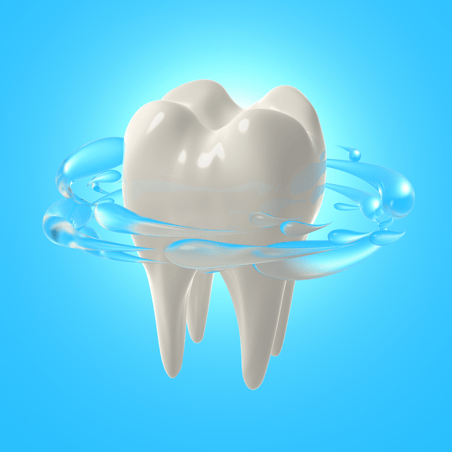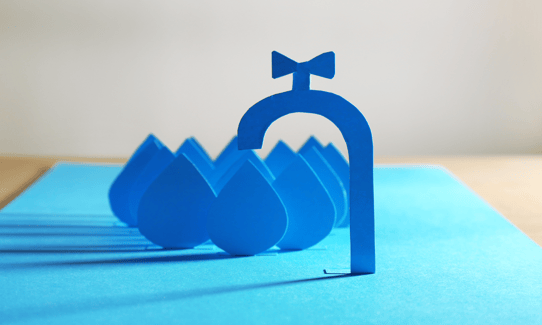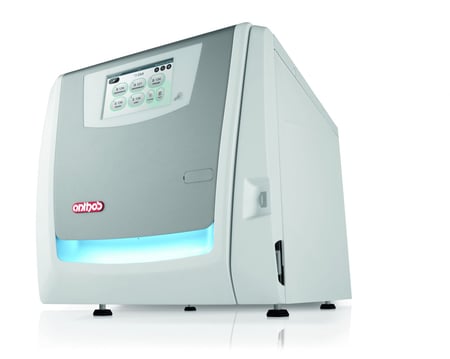Turning the tide: reducing water waste and pollution in dentistry

In today's environmental landscape, all industries must share the responsibility of minimising their ecological footprint, dentistry included. From chemical disposal to waste management, many aspects of dentistry directly impact the health of our water bodies. Furthermore, the substantial water consumption required for procedures and sterilisation not only results in wastage but also strains local water resources.
Balancing the imperative of environmental sustainability without compromising patient care is paramount. Through mindful practices and innovative solutions, dental professionals can make meaningful strides in mitigating these impacts while maintaining the highest standards of treatment and safety.
Water pollution in dentistry
In the pursuit of optimal oral health, it's imperative that we also consider the health of our environment. Dental practices, though well-intentioned, can inadvertently contribute to water pollution. The disposal of chemicals, amalgam waste, and single-use plastics all play a part in this ecological challenge.
 Statistics reveal that dental offices are notable contributors to mercury discharge, a potent neurotoxin that poses risks to both human and environmental health. This underlines the urgency for adopting eco-friendly practices in our profession. A study has estimated that the dental industry may be responsible for up to 14% of the total mercury load in wastewater, which then has to be specially treated at wastewater plants[1].
Statistics reveal that dental offices are notable contributors to mercury discharge, a potent neurotoxin that poses risks to both human and environmental health. This underlines the urgency for adopting eco-friendly practices in our profession. A study has estimated that the dental industry may be responsible for up to 14% of the total mercury load in wastewater, which then has to be specially treated at wastewater plants[1].
To do your part to minimise this issue, we advocate for the implementation of amalgam separators, a pivotal step in preventing the release of mercury and other contaminants into water bodies. Furthermore, the adoption of more eco-friendly dental materials and responsible waste disposal practices can dramatically reduce our environmental footprint – have you considered when other materials, such as composite resin or glass ionomer might be better suited for restorations?
Water waste in dentistry
A dental practice cannot run without water, it is relied on for procedures, hygiene, and sterilisation, as well as an important amenity for patients. But all water that we use has to be carefully filtrated and treated to make it safe, which is a highly energy-intensive process; especially as only 1.2% of the world’s water is drinkable[2].
So, it's crucial to recognise that excessive water usage can lead to wastage, which puts a strain on local water resources and consumes huge amounts of energy.
 Common practices, such as leaving taps running or utilising high-flow equipment without necessity, can inadvertently contribute to water waste within our dental offices. These seemingly small actions accumulate over time, creating a significant impact on local water supplies. To mitigate this, you can implement practical measures to minimise water waste.
Common practices, such as leaving taps running or utilising high-flow equipment without necessity, can inadvertently contribute to water waste within our dental offices. These seemingly small actions accumulate over time, creating a significant impact on local water supplies. To mitigate this, you can implement practical measures to minimise water waste.
It's a great idea to upgrade to a modern semi-wet or dry line suction pump, replacing outdated wet line pumps. Most older models rely on a water-driven venturi system, necessitating a constant water supply, which can seriously add to your water consumption.
Single user suction pumps such as the Durr VSA300s or Cattani Microsmart, or multiuser suction pumps like the Durr VSA500 or Cattani Turbosmart range are great choices for a more modern, water-reduced system.
Additionally, when selecting autoclaves, opt for models equipped with recirculation filters. This choice enables the reutilisation of water, once filtered for physical and chemical impurities. Moreover, these autoclaves are compatible with tap water, eliminating the need for water-intensive reverse osmosis systems or carbon emission-intensive distilled water.
 The A17 Platinum is not only a great choice of autoclave, it is also equipped with a recirculation filter and compatible with tap water.
The A17 Platinum is not only a great choice of autoclave, it is also equipped with a recirculation filter and compatible with tap water.
Another excellent approach to enhance environmental consciousness is opting for models equipped with remote diagnostics and support capabilities. In the event of a breakdown, this feature eliminates the need for engineers to travel. Instead, they can remotely access and visualise crucial parameters in real time, ensuring efficient resolution without the environmental impact of unnecessary travel.
The Anthos range of autoclaves is enabled for remote support, perfect for practices trying to go greener!
By adopting water-saving equipment and employing efficient sterilisation methods, we not only conserve resources but also exemplify responsible stewardship in our profession. Additionally, we can encourage our patients to adopt water-saving routines in their dental care at home, extending the reach of our conservation efforts beyond the confines of our offices.
[1] https://www.ncbi.nlm.nih.gov/pmc/articles/PMC5892656/
[2] https://essutility.co.uk/how-waste-water-affects-the-environment-and-how-to-avoid-it/

